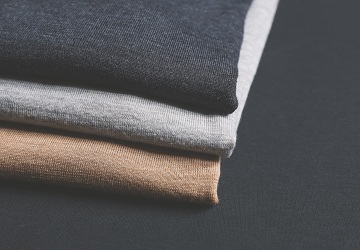The Rise of Gender-Neutral Fashion: Breaking Boundaries in Style
Unisex clothing has grown in popularity in recent years as designers and stores push the boundaries of traditional fashion. This shift toward a more inclusive fashion philosophy mirrors a broader cultural movement for equality and inclusion.
Creating non-binary clothing is only one aspect of gender-neutral fashion. Other elements include celebrating diversity, promoting free speech and overturning the notion that one gender should have all fashion choices. This article examines the emergence of unisex clothing, its impact on the fashion industry, and its importance in promoting diversity and inclusion.
The Origins of Unisex Fashion
As we all know, the idea of unisex fashion is not new, but it has become more and more popular recently. Gender-neutral fashion first gained traction with the rise of the feminist and LGBTQ+ movements in the 1960s and 70s.
At this point, designers began experimenting with unisex clothing, thinking that fashion could be used to challenge cultural conventions and expectations. But it wasn't until the 2010s, with the rise of companies like Telfar, Agender and Veerle, that unisex clothing really took off.
Rejection of traditional gender conventions and prejudices is one of the defining characteristics of unisex clothing. Everyone, regardless of gender, should wear unisex clothing that is not designed for men or women. This suggests that dresses are generally unisex, featuring clean, streamlined lines and neutral colours. The use of soft, utilitarian materials like denim, cotton, and wool is another hallmark of unisex clothing.

The Impact of Gender-Neutral Fashion on the Fashion Industry
The emergence of gender-neutral fashion has had a profound and powerful impact on the fashion industry. The increasing presence of non-binary and gender non-conforming people in fashion campaigns and marketing is one of the most important trends. Traditional gender norms in fashion are being challenged by companies like Calvin Klein, Diesel and H&M, all of which use non-binary and gender-nonconforming models in their advertising campaigns.
The growth of unisex clothing brands is another influence of unisex fashion. Brands such as Zara, H&M and Gap all offer unisex clothing lines with a generally flattering style. Not only does this help promote diversity and inclusion, but it also allows manufacturers to reach a previously untapped segment of shoppers looking for stylish and comfortable clothing.
Last but not least, the advent of gender-neutral fashion has influenced the way clothing is created and manufactured. Designers are free to emphasize ease of use and comfort in their garments by creating unisex garments rather than following traditional gender stereotypes. This makes garments with features like pockets and adjustable waist belts more functional and adaptable.
The Importance of Unisex Fashion

The importance of unisex clothing cannot be overemphasized. Unisex clothing encourages diversity and inclusion, creating a more welcoming and tolerant society by challenging established gender norms in the fashion industry. Plus, it gives people more freedom of expression, allowing them to dress in a way that truly expresses their individuality and sense of style, rather than conforming to social norms.
Additionally, unisex clothing has the potential to be more environmentally friendly than traditional clothing. Because unisex clothing is designed to be worn by anyone, regardless of gender, there is no need for separate clothing lines for men and women. As a result, the fashion industry produces less waste clothing, promoting a more sustainable future.
How to Design Unisex Clothes
Here are some tips for designing unisex clothing.
Adjustments are essential because male and female bodies are biologically different, but they should not affect the overall appearance of the garment.
T-shirts, for example, are easy to style and can be worn by both men and women. However, the different sizes and proportions of the jacket or shirt are important.
keep it simple. If you're just starting out, choose a few unisex pieces and size accordingly. The overall style should be straight and relaxed, not too tight or too loose.
Most unisex clothing still focuses on men's fashion. While the silhouette can be changed and new materials used, the garment remains essentially menswear but has become more feminine.
Don't be afraid to use tons of colors and patterns; go crazy for colors. Use bold strokes and bright colors to make your outfit stand out.
Features like roomy pockets, buttons and zippers are as important to unisex design as comfort. live frugally!
The Future of Unisex Fashion
Unisex clothing is all the rage and becoming more common, and it's likely to stay that way. As society increasingly accepts different gender identities, traditional gender roles in fashion are being challenged. Consumers are no longer bound by strict gender stereotypes, but demand clothing that can express their unique style and personality.
We can expect more companies and designers to embrace gender-neutral styles and offer a wider range of inclusive clothing options. This can be part of a more unisex design, as well as a wider range of sizes and fits to suit different body types.
Technology will also have an impact on the development of unisex clothing. The results of 3D printing and other cutting-edge manufacturing methods are making it easier and more affordable for designers to create professional garments for a variety of body types and fashion preferences.
Another trend that may be emerging is a greater emphasis on ethical and sustainable production methods for unisex clothing. As shoppers become more aware of the impact their clothing choices have on society, they may be looking for clothing brands that value sustainability and ethical manufacturing.
Diploma
The advent of unisex clothing marks a major shift in fashion and reflects broader societal trends towards non-binary clothing. Unisex fashion has a bright future that is more inclusive, personal and sustainable. Let's pin our hopes on the fashion world.







